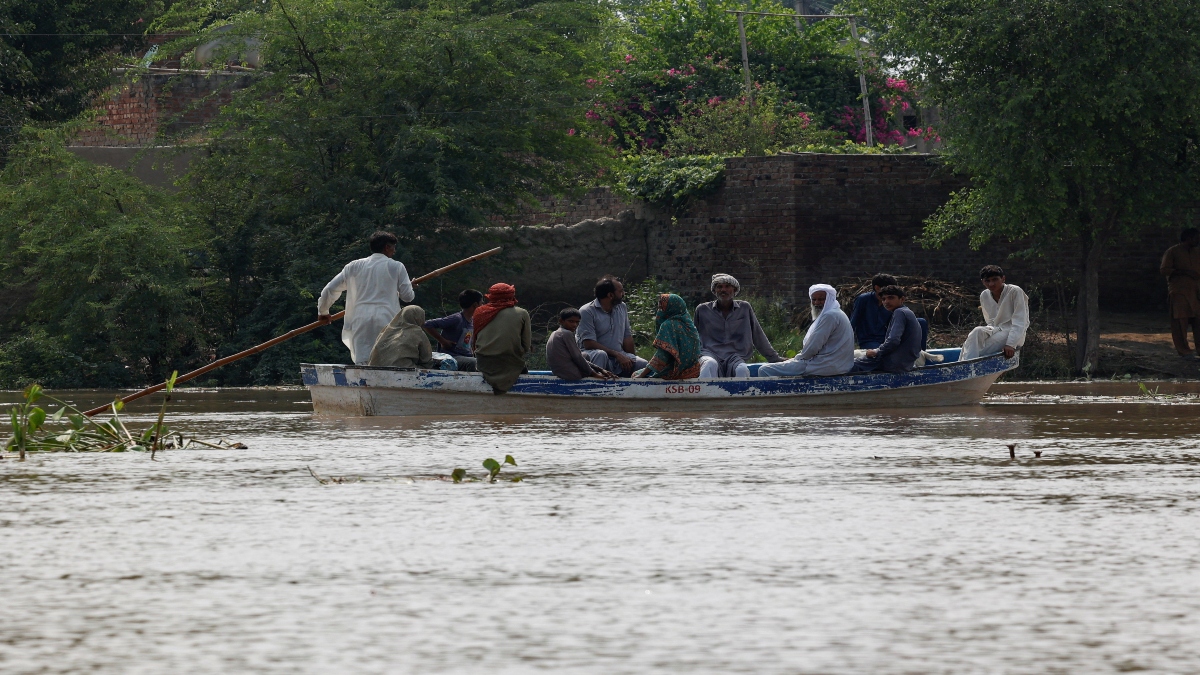After India warned it would release excess water from a dam, Pakistan has evacuated at least 150,000 people from areas near three major rivers in its agricultural heartland, according to a Reuters report, citing officials on Tuesday.
Both countries have been battered by heavy rains and severe flooding in recent weeks.
The planned water release, combined with ongoing rainfall, poses a serious threat to low-lying areas in Pakistan’s Punjab province, a key agricultural region that supplies a significant portion of the country’s food.
The nuclear-armed nations have been in a tense stand-off since a brief conflict in May, their worst fighting in decades, and any flooding blamed on New Delhi could inflame ties.
According to the report, Pakistani officials said they received a second warning from India on Monday regarding the planned release of water from the rapidly rising Madhopur Dam, located in Indian Punjab.
Evacuations in vulnerable areas began last Friday, even before the latest warning, and are still ongoing, said Spokesperson from Pakistan’s National Disaster Management Authority (NDMA).
The spokesperson added that the total evacuation figure includes at least 35,000 people who left voluntarily following a series of early warnings issued since August 14.
Army personnel have also been deployed to assist in the evacuation efforts.
India regularly releases water from its dams once they reach capacity, with the excess often flowing downstream into Pakistan.
No specific dam was named in the recent warning, but heavy rainfall prompted New Delhi to issue a second warning to Pakistan through diplomatic channels, reported Reuters, citing an Indian government source.
Impact Shorts
More ShortsWhen asked if additional warnings could follow, the source said it remained a possibility.
On Sunday, India had already informed Pakistan that substantial water volumes would be entering its river systems due to ongoing downpours.
Three key rivers —the Ravi, Sutlej, and Chenab — flow into Pakistan from Indian territory. Pakistan’s disaster management authority reported medium to high flooding levels in all three and warned of more intense rainfall in Punjab and Pakistan-administered Kashmir over the next 12 to 24 hours.
Mazhar Hussain, a Pakistani disaster management official, told Reuters that India will release a controlled amount of water from dams in the coming days. Hundreds of villages situated on the embankment of the three rivers have been evacuated, he added."
“Sixteen villages are at risk of flooding,” Reuters quoted Deputy Commissioner Saba Asghar Ali after visiting Pasrur city near the Indian border.
Arrangements for food, medicines, washrooms, and other necessities have been made in the relief camps set up in the area, she said, adding that there may be a need to relocate a population of 5,000 and 1,450 livestock to safer locations.
“Due to climate change, eastern rivers are experiencing heavier rainfall compared to the past,” Kazim Raza Pirzada, the Punjab province irrigation minister, was quoted as saying.
Agricultural heartland
Pakistan’s northwest has been hit hard by severe flooding, accounting for half of the 799 monsoon-related deaths this season.
Glacial melt has accelerated in Gilgit-Baltistan, and parts of Karachi were submerged last week. Now, the flooding is threatening eastern Punjab — home to half of Pakistan’s 240 million people and the country’s key agricultural region.
The crisis escalated after India, citing a deadly attack on Hindu tourists in Kashmir, suspended the decades-old Indus Waters Treaty with Pakistan. Islamabad has denied involvement.
India’s latest warning about water release was issued on “humanitarian grounds,” not under the treaty, following heavy rains in Jammu and Kashmir.
With inputs from agencies


)

)
)
)
)
)
)
)
)



